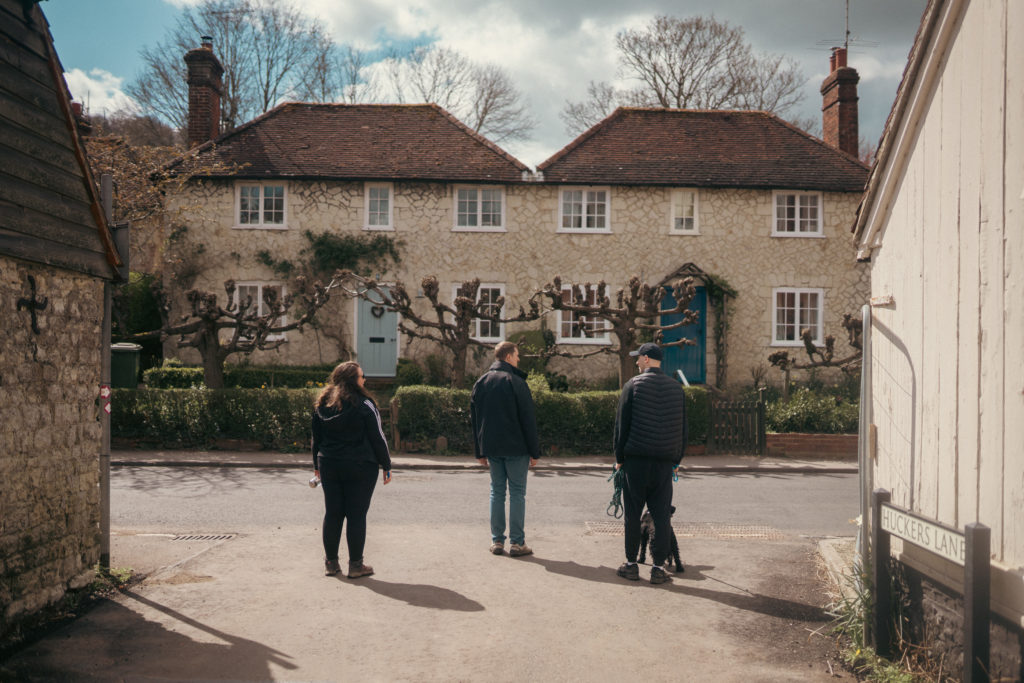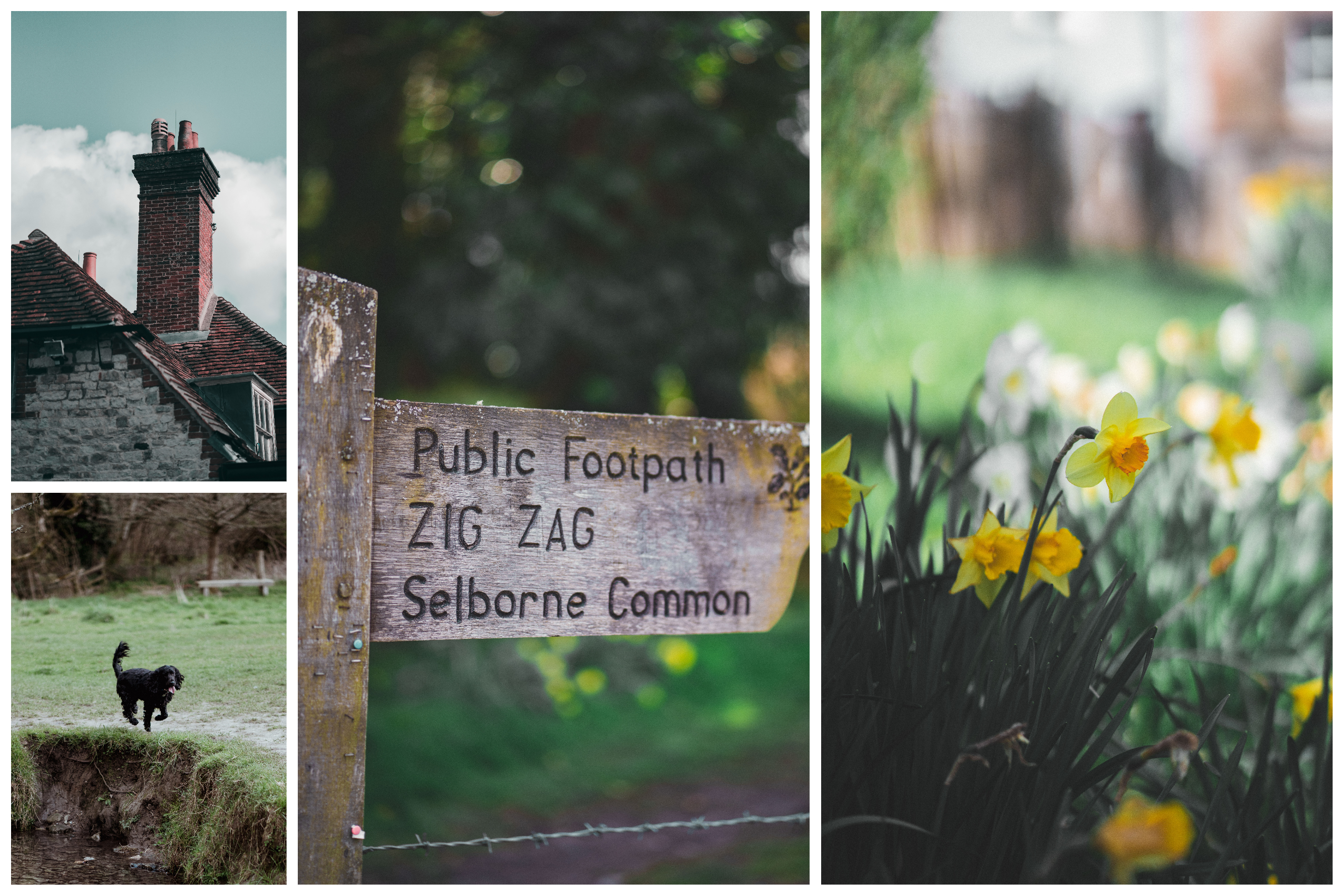Date: April 9, 2022
Location: Selborne, Hampshire
Distance 6km
(map and trail located here: Selborne – in Gilbert White’s footsteps | AA RatedTrips.com)
As the weather seems to be improving one degree at a time, it’s making it a lot easier to sit in front of maps and walking directions and figure out which one to do next. The walk for #9 of the year was actually quite easy to plan as we were meeting up with a few friends and their energetic dog, Sonny and one of the walks on our list just happened to be right around the corner.
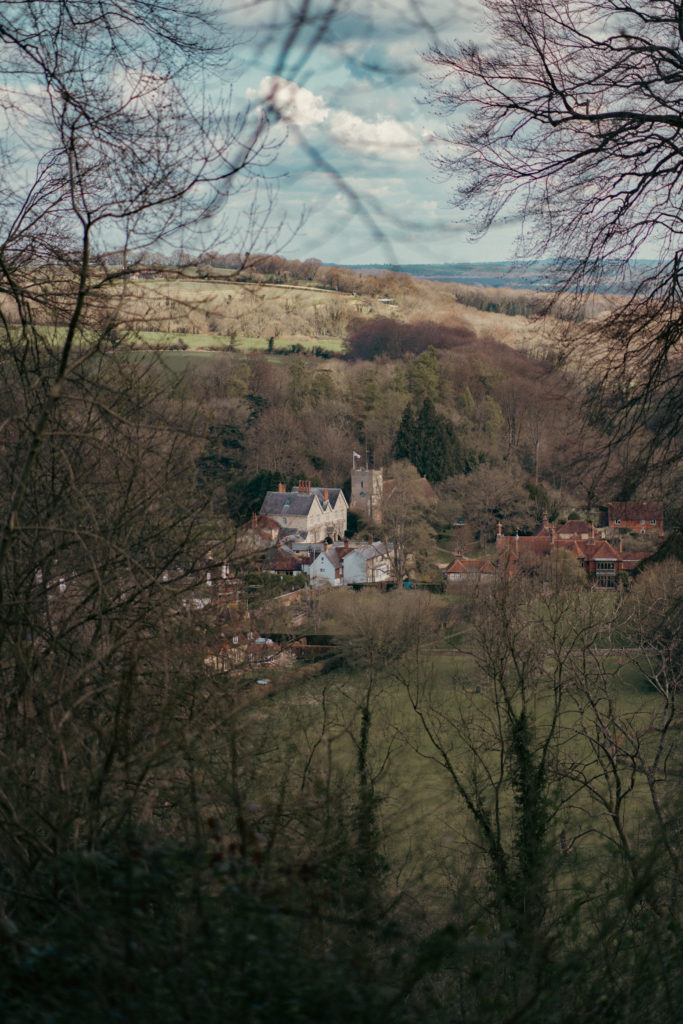
This walk is actually just a few minutes away from one of the previous walks around Jane Austen’s home, and is home to another famous figure, this time being the naturalist, ecologist and author Gilbert White (don’t worry, I didn’t know who he was at first either). Gilbert White is widely recognized as the father of ecology and made major discoveries and wrote a book that is one of the most published in England, The Natural History of Selborne, which has never been out of print. Charles Darwin looked to Gilbert as a role-model and made his own pilgrimage to Selbourne in the mid 1800’s.
Our walk started just outside Gilbert’s house which is now a museum, café, and shop filled with all things ecology. The village, Selborne, is a picturesque village with only a few main roads dotted with thatched roof cottages. We left the parking lot and headed straight for one of Gilbert’s lasting legacies, the Zig Zag Trail.
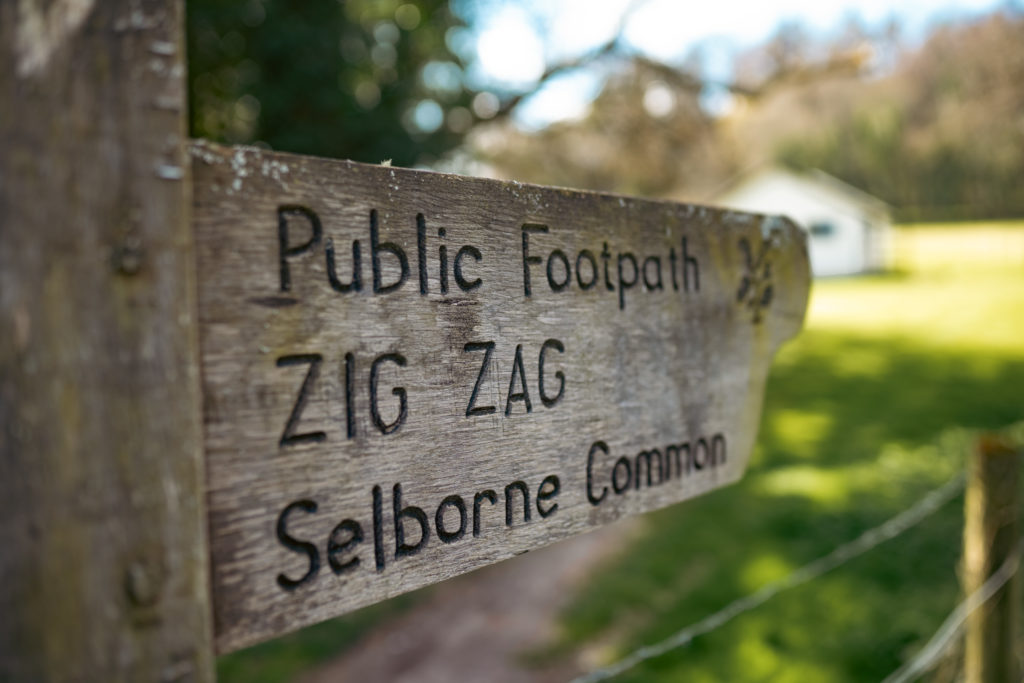
The Zig Zag trail up toward Selborne Common was built in 1753 by Gilbert White and his brother, as a way to gently ascend the nearby hillside. It’s a cut series of short switchbacks that certainly feel nicer to go up than walking straight up the hill. We passed a few families along the way and before you knew it were at the top, staring out over the hillsides of Hampshire, where Gilbert White would have taken in the natural world he loved so much.
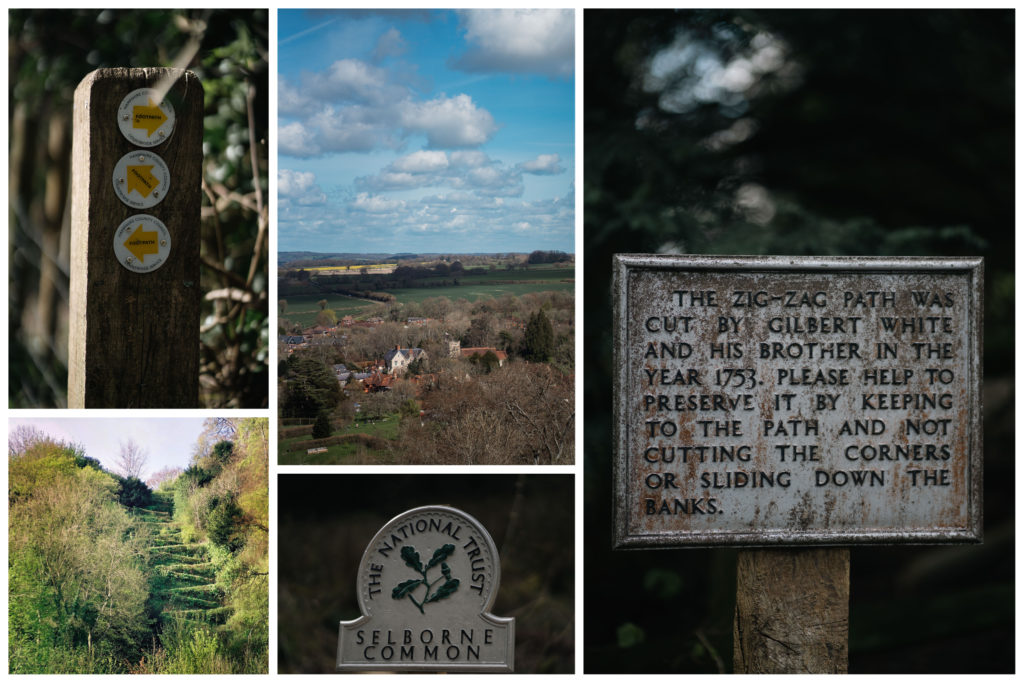
The views from the top of the hill were really nice and you could spot the bright yellow of nearby farmer’s fields and the tops of churches from villages around the county. We followed a long descent back down toward the town, letting Sonny race ahead to get in some steps.

Selborne is a small village with lots of history, there has been evidence of Neolithic settlements, bronze age barrows, and the local church was built in the late 12th century. We ventured across a busy road that cuts through the village to continue our trail through the churchyard and down toward a small creek on the other side.
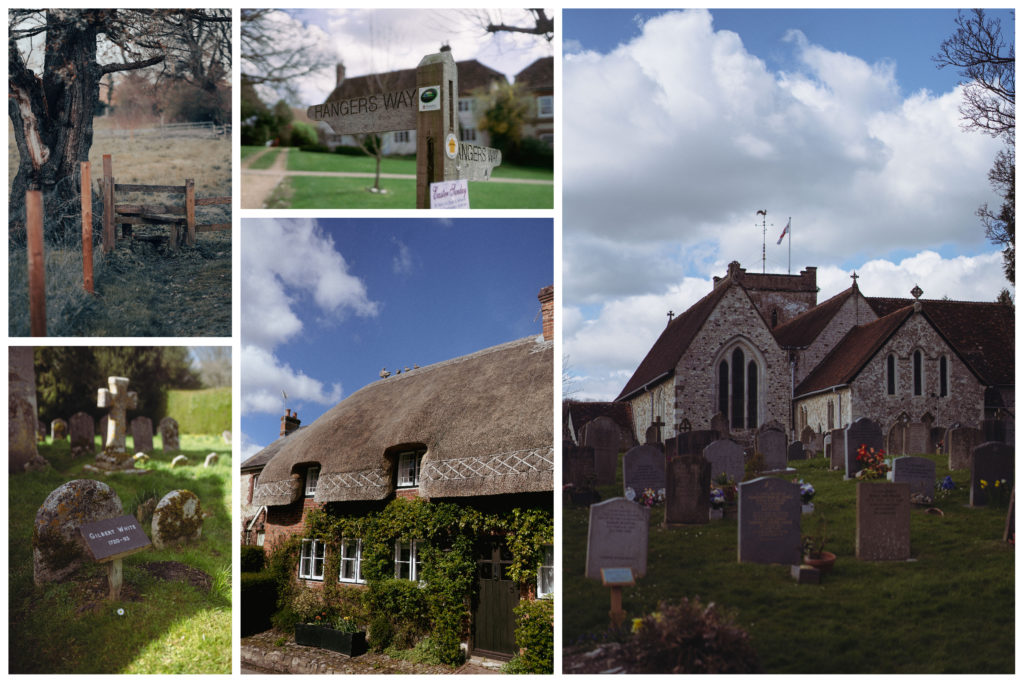
After leaving the churchyard and village behind we wandered through some trails called Hangars Way which is a 34km trail that marks the geological edge of chalk between the North Downs and South Downs in southern England. The trail was easy to follow and there were lots of wildflowers starting to pop up, as well as pockets of wild garlic that could be smelled faintly in the air.
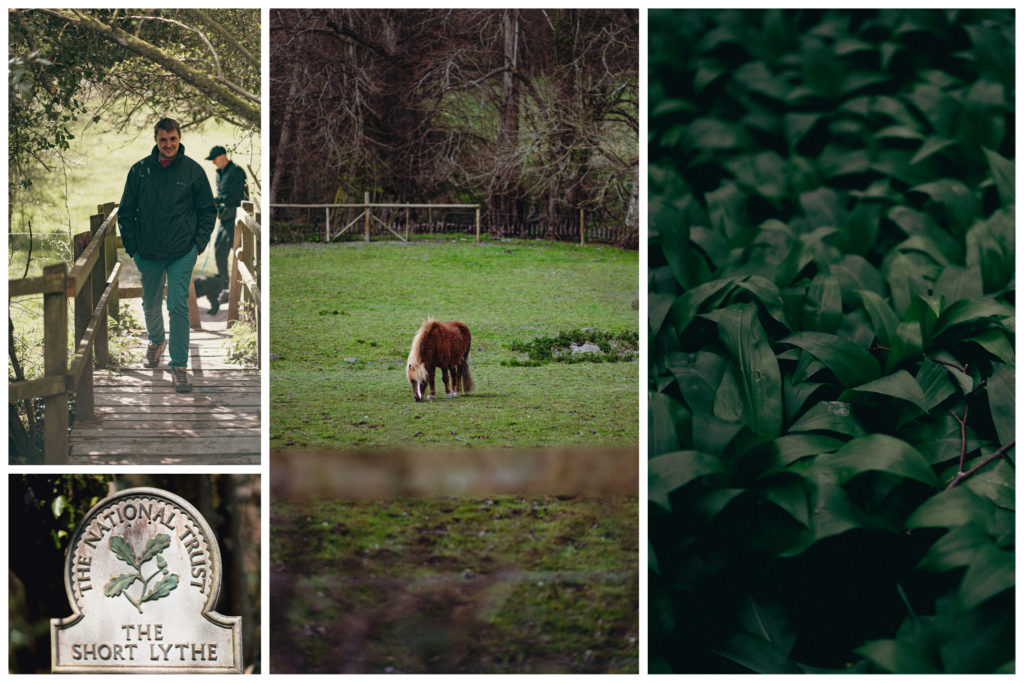
Eventually our trail walked us to a nearby farm which we quickly walked through (it still amazes me that these right of way trails can literally cut through a farm yard) and then we looped back toward the village of Selborne.
